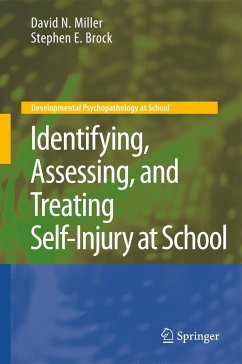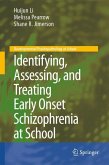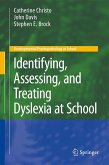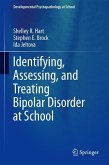Nonsuicidal self-injury (NSSI) among young people-most notably in the form of forearm- or wrist-cutting-occurs across cultural groups, social strata, and developmental stages, puzzling and repelling adults. Youth engaging in NSSI behaviors are at a higher risk for suicidality as well as other mental health and academic problems. And because NSSI is often first noticed in the school setting (as is the case with many children's disorders), school professionals are being encouraged to take a more proactive role in intervention.
The first book specifically geared toward education personnel, Identifying, Assessing, and Treating Self-Injury at School clearly defines NSSI, differentiating it from suicidal, borderline, and other behaviors and analyzing the psychological contexts in which it occurs. This school-based perspective gives readers a practical framework for earlier, more accurate diagnosis; relevant consulting with parents, teachers, and colleagues; and effective, science-based treatment.
Included in the coverage: an overview of causes of self-injury, current findings on prevalence and associated conditions, early screening guidelines, including risk factors and warning signs, the latest information on assessment issues and diagnostic methods, a separate chapter on psychoeducational assessment and up-to-date research on interventions for NSSI.
Identifying, Assessing, and Treating Self-Injury at School offers a solid foundation for school psychologists and allied educational professionals to understand students with NSSI and address their complex needs.
The first book specifically geared toward education personnel, Identifying, Assessing, and Treating Self-Injury at School clearly defines NSSI, differentiating it from suicidal, borderline, and other behaviors and analyzing the psychological contexts in which it occurs. This school-based perspective gives readers a practical framework for earlier, more accurate diagnosis; relevant consulting with parents, teachers, and colleagues; and effective, science-based treatment.
Included in the coverage: an overview of causes of self-injury, current findings on prevalence and associated conditions, early screening guidelines, including risk factors and warning signs, the latest information on assessment issues and diagnostic methods, a separate chapter on psychoeducational assessment and up-to-date research on interventions for NSSI.
Identifying, Assessing, and Treating Self-Injury at School offers a solid foundation for school psychologists and allied educational professionals to understand students with NSSI and address their complex needs.
From the reviews: "Miller and Brock have written a book for those working in the environment where adolescents spend a significant portion of their time --schools--and they discuss methods for both assessment and treatment. ... very useful resource for a variety of school personnel who find themselves in the position to deal with the mental health needs of students who may engage in NSSI. ... useful for parents or other professionals who would like to understand and advocate for support of a child in a school-based setting." (Kimberly Wilson Booker, PsycCRITIQUES, Vol. 56 (3), January, 2011) "This book ... discusses nonsuicidal self-injury (NSSI) in a school setting, its etiology, assessment, and treatment. ... It is intended for school psychologists and allied educational professionals, but graduate students in school psychology obviously would benefit as well. ... tables and figures are very helpful and an appendix lists Internet resources. The book is easy to read ... and is full of references for further investigation. ... It is must reading for school personnel, who may be the first to uncover, these behavioral issues." (Gary B. Kaniuk, Doody's Review Service, January, 2010)








